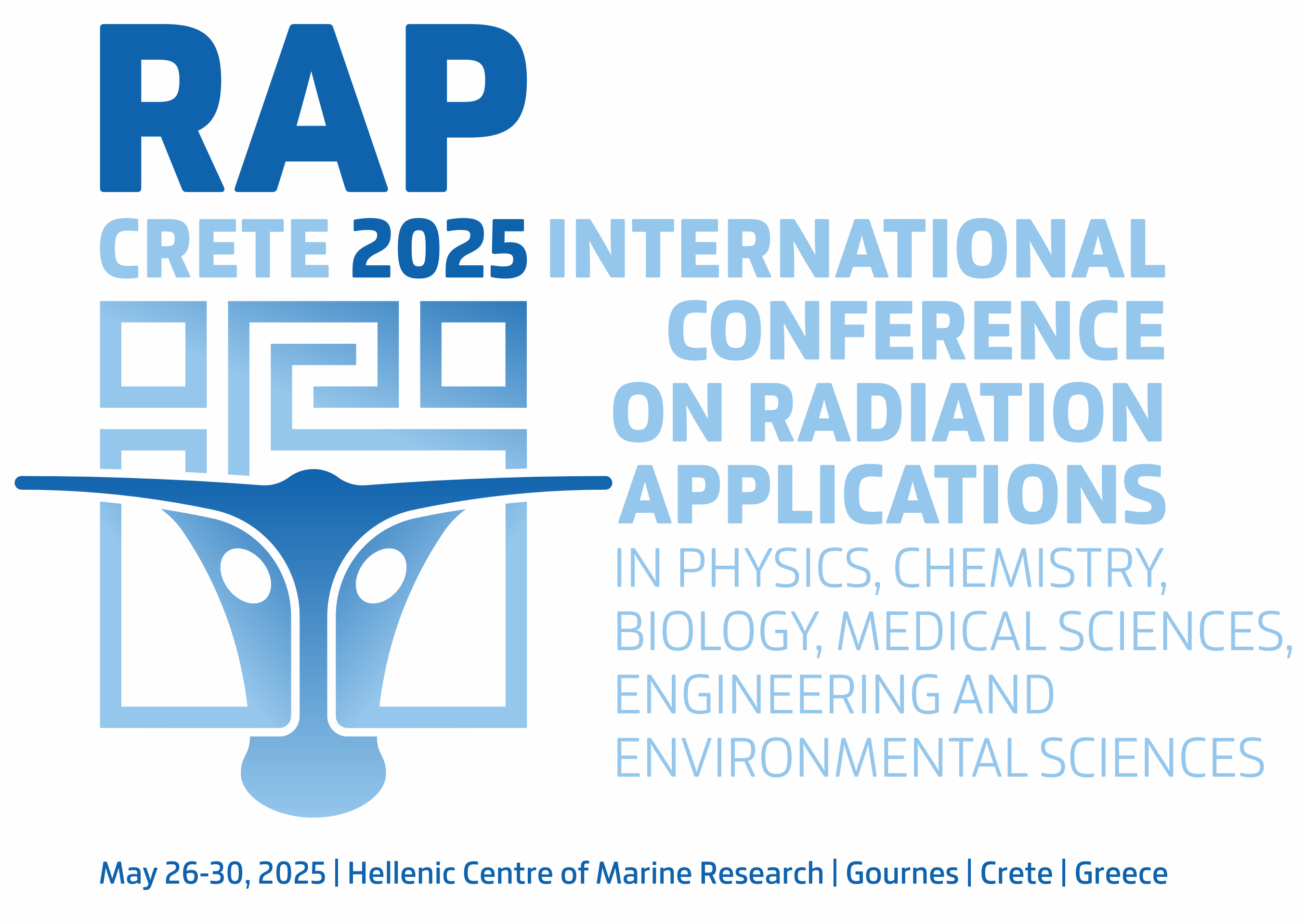Vol. 4, 2019
Medical Physics
INFLUENCE OF THE DISTANCE BETWEEN IMPLANTED SOURCES ON THE TUMOUR CONTROL PROBABILITY
Evgeniia S. Sukhikh, Andrey V. Vertinskiy, Leonid G. Sukhikh, Alexandr V. Taletsky, Mariya A. Tatarchenko
Pages: 176–180
DOI: 10.37392/RapProc.2019.36
Abstract | References | Full Text (PDF)
Optimization of the applicators position is very important for uniform dose distribution in the case of lip cancer treated using brachytherapy methods. Depending on the patient’s anatomical data there are several possible positions of the applicators at different distances. The criterion of the choice of the best positions can be based on the tumour control probability concept that naturally takes into account both physical dose distribution and radiobiological effects. In this work, we present the results of the investigation of the influence of the distance between applicators implanted in the recommended range of distances (8-12 mm) on the value of tumour control probability in the case of lip cancer. According to our investigations the optimal distances amounted 9 and 10 mm between implants.
- J. L. Guinot y col., “Braquiterapia de alta tasa en el carcinoma escamoso de labio en estadios iniciales,” Acta Otorrinolaringol. Esp., t. 67, núm. 5, págs. 282 – 287, Sep-Oct., 2016. (J. L. Guinot et al., “High dose rate brachytherapy in early stage squamous-cell carcinoma of the lip”, Acta Otorrinolaringol. Esp., vol. 67, no. 5, pp. 282 – 287, Sep-Oct., 2016.)
DOI: 10.1016/j.otorri.2015.12.003
PMid: 27063585 - A. R. Casino et al., “Brachytherapy in lip cancer,” Med. Oral Patol. Oral Cir. Bucal, vol. 11, no. 3, pp. 223 – 229, May. 2006.
PMid: 16648757 - J. J. Mazeron et al., “GEC-ESTRO recommendations for brachytherapy for head and neck squamous cell carcinomas,” Radiother. Oncol., vol. 91, no. 2, pp. 150 – 156, Mar. 2009.
DOI: 10.1016/j.radonc.2009.01.005
PMid: 19329209 - Z. T. Nagy et al., “American Brachytherapy Society Task Group Report: Combined external beam irradiation and interstitial brachytherapy for base of tongue tumors and other head and neck sites in the era of new technologies,” Brachytherapy, vol. 16, no. 1, pp. 44 – 58, Aug. 2016.
DOI: 10.1016/j.brachy.2016.07.005
PMid: 27592129 - V. Tombolini et al., “Brachytherapy for squamous cell carcinoma of the lip. The experience of the Institute of Radiology of the University of Rome ‘La Sapienza’,” Tumori, vol. 84, no. 4, pp. 478 – 482, Jul-Aug. 1998.
Retrieved from: https://www.ncbi.nlm.nih.gov/pubmed/9825000 - J. L. Guinot et al., “From low-dose-rate to high-dose-rate brachytherapy in lip carcinoma: Equivalent results but fewer complications,” Brachytherapy, vol. 12, no. 6, pp. 528 – 534, Jul. 2013.
DOI: 10.1016/j.brachy.2013.05.007
PMid: 23850275 - R. Bhalavat et al, “High-dose-rate interstitial brachytherapy in head and neck cancer: do we need a look back into a forgotten art - a single institute experience,” J. Contemp. Brachytherapy, vol. 9, no.2, pp. 124 – 131, Apr. 2017.
DOI: 10.5114/jcb.2017.67147
PMid: 28533800
PMCid: PMC5437083 - G. Kovács, “Modern head and neck brachytherapy: from radium towards intensity modulated interventional brachytherapy,” J. Contemp. Brachytherapy, vol. 6, no. 4, pp. 404 – 416, Dec. 2014.
DOI: 10.5114/jcb.2014.47813
PMid: 25834586
PMCid: PMC4300360 - Dose and Volume Specification for Reporting Interstitial Therapy, vol. 30, ICRU REPORT 58, ICRU
DOI: 10.1093/jicru/os30.1.Report58 - D. J. Brenner, “The linear-quadratic model is an appropriate methodology for determining isoeffective doses at large doses per fraction,” Semin. Radiat. Oncol., vol. 18, no. 4, pp. 234 – 239, Oct. 2008.
DOI: 10.1016/j.semradonc.2008.04.004
PMid: 18725109
PMCid: PMC2750078 - M. Joiner, A. van der Kogel, Basic Clinical Radiobiology, 4th ed., London, UK: Hoder Arnold, 2009.
Retraived from: http://en.bookfi.net/book/1206779 - MultiSource HDR User Guide. Eckert&Ziegler BEBIG GMbH, Germany,2006
- H. A. Azhari, F. Hensley, W. Schütte, G. A. Zakaria, “Dosimetric verification of source strength for HDR afterloading units with Ir-192 and Co-60 photon sources: Comparison of three different international protocols,” J. Med. Phys., vol. 37, no. 4, pp. 183 – 192, Oct. 2012.
DOI: 10.4103/0971-6203.103603
PMid: 23293449
PMCid: PMC3532746 - Cases: Head and Neck: Oral Cavity: Tongue, eContour, USA, 2019.
Retrieved from: https://econtour.org/cases/3;
Retrieved on: Aug. 20, 2019 - MultiSource HDRplus User Giude, sonoTECH GmbH.
- Wolfram Mathematica, Wolfram Research, Champaign (IL), USA, 2019.
Retrieved from: https://www.wolfram.com/mathematica/;
Retrieved on: Aug. 20, 2019 - A. Niemierko, “Reporting and analyzing dose distributions: a concept of equivalent uniform dose,” Med. Phys., vol. 24, no. 1, pp. 103 – 110, Jan. 1997.
DOI: 10.1118/1.598063
PMid: 9029544 - A. Niemierko, “A unified model of tissue response to radiation,” in Proc. 41th annual meeting (AAPM), Nashville, Tennessee, USA, Jul. 1999.: Med Phys, 1999. p. 1100.
Retraived from: https://www.aapm.org/meetings/99AM/pdf/2695-43467.pdf


